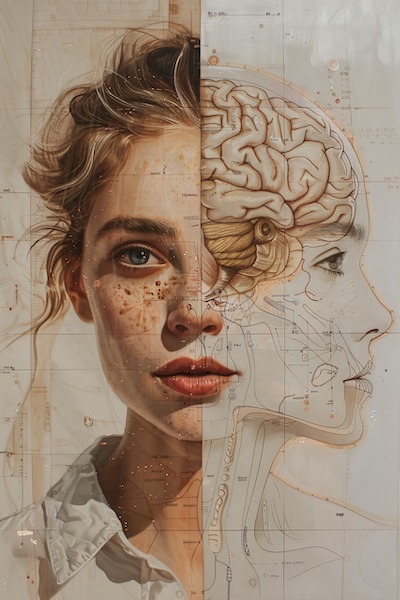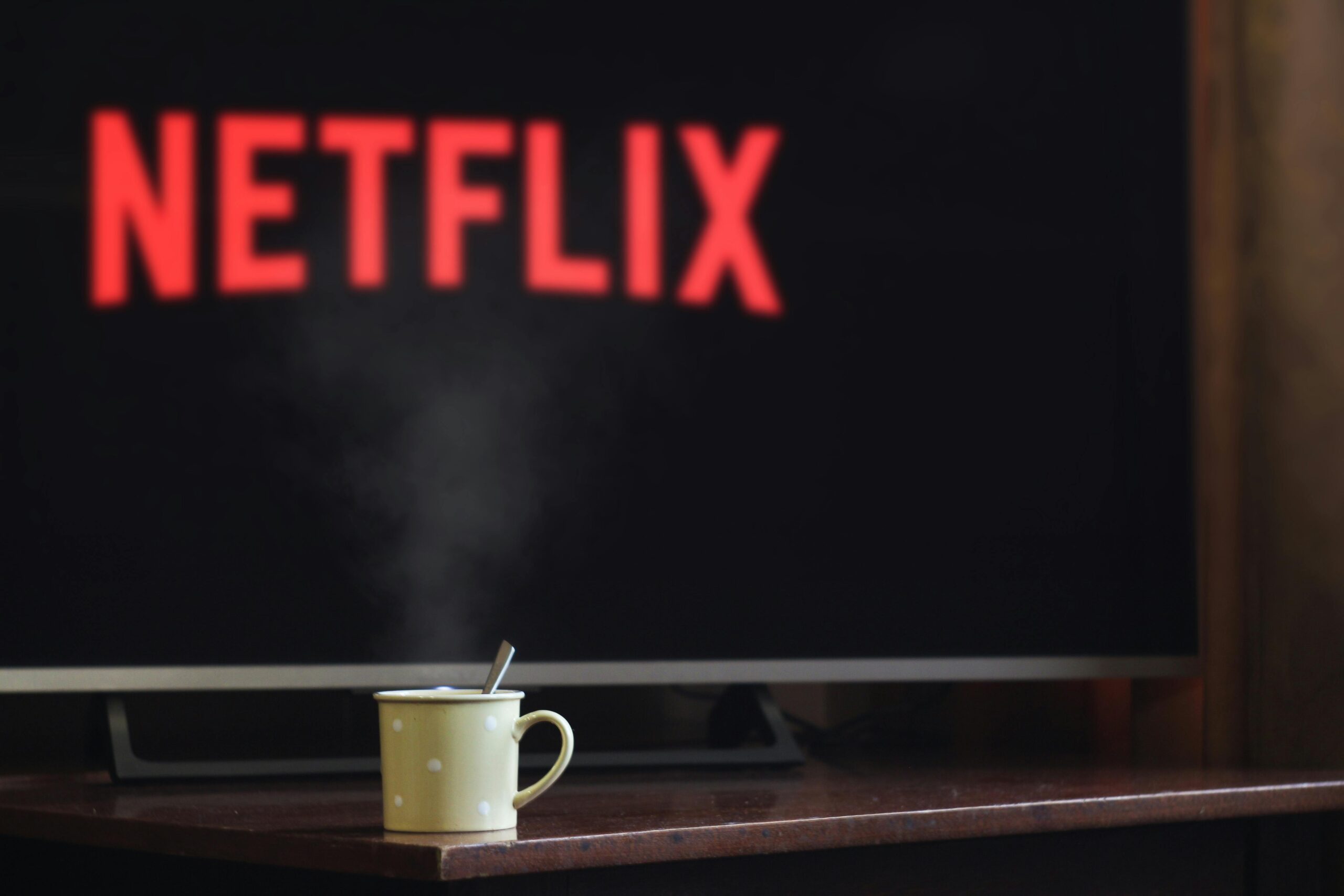Technology has been changing the game in film and episodic TV for decades, and with it has come major leaps in innovation as well as some drawbacks. So, why, then, are we afraid of AI? Yes, it’s going to be disruptive in the coming years, but industry disruption is not new; it’s happened before, many times. AI technology can and will replace certain creative activities, but with each technological advance, industry professionals have been able to refine, expand, and improve their creative processes.

“But now I’m not so sure I believe in beginnings and endings. There are days that define your story beyond your life. Like the day they arrived.” –Louise Banks, “Arrival,” Lava Bear Films, 2016
We were recently asked if we think AI is the biggest threat for the video content creation industry or the biggest opportunity. Being somewhat of a smart aleck, we said yes. Right now, we’re at the very beginning of testing, playing with, using, and learning what the technology can/can’t, should/shouldn’t do. Sometimes, technology is good, and sometimes it’s a disaster. And by the time we figure out if and who it’s going to harm, it’s too damn late.
Back in 1928, Charlie Chaplin said, “Moving pictures need sound as much as Beethoven needs lyrics.” He came up a little short because he only considered the creatives needs, not the audience.
It has taken cinematographers and filmmakers a number of years to “learn” how to develop scripts that tell an audio story. Along the way, they gained experience in how to develop/use audio/voice-capture technologies that were easy and economical to use—technologies that made films/shows that were more exciting, more interesting to people. Some folks lost their jobs, while others survived and prospered in the industry by learning how to use the new technologies.
A little over 15 years ago, Netflix, the red envelope company, launched its fledgling streaming business with the audacious idea of letting folks watch stuff online. To do it, they acquired movie distribution rights from Sony, Disney, and a few other studios, with the idea of letting folks—for a modest monthly fee—watch movies and shows when they wanted. Studios figured what the heck, it put more money in their pockets for their “old” content.
In the ensuing years, they disrupted the entire content distribution chain, causing studios, theaters, and networks to rethink how they reach/attract the viewing public. And yes, the pandemic and dual professional strikes slashed the number of films/shows produced while increasing the production cost. Major (expensive) projects still get theatrical windows ranging from 30 to 90 days, while modest films have seven- to 30-day windows before they move to studio/network streaming services.
To adjust to the new economics, networks have shifted to shorter make-or-break scripted seasons, increased the number of unscripted shows, and placed greater emphasis on real-time sports. At the same time, networks/studios have been taking a hard look at their “overhead” requirements. WBD has been going through a seemingly endless string of staff reductions. Disney, Peacock, and the other major studios have been doing the same.
With Skydance’s acquisition of Paramount, Paramount’s trio of bosses have been busy slashing staff across the board, rather than developing plans to grow the company’s studio, network, and streaming presence, profitability. Sooner or later, Skydance Chairman David Ellison and President Jeff Shell, former NBCUniversal boss, will also have to lighten the rather insane financial burden Shari Redstone added to the company when she anointed a triad of presidents.

The challenge for studios is that the cost of content production has steadily risen. Major and minor film budgets have more than doubled in the past 20 years, and the cost of a scripted TV show has more than doubled in the last 10 years. All of the studios are hoping that AI will deliver to its management the promise of reducing their labor costs.
There are two ways to do it. Blow it up now by implementing generative AI everywhere and hoping the viewing public will accept the new content, or do it slowly, with all the participants in the creative content industry participating, and deliver a newer, better, more interesting/exciting experience for the audience.
A number of years ago, Jeff Katzenberg brokered the Pixar deal to produce 3D computer-generated animated movies and green-lit Toy Story. He’s credited with advancing computer-generated animation technology, which displaced thousands of animation cel artists, while creating new, exciting opportunities for a new generation of computer animators. The transition dramatically reduced the production time and cost of animated films.
Now, the venture capitalists, with investments in a number of AI firms, have predicted that generative AI can reduce the cost and staffing requirements of animated films by 90% and commoditize the work. But… the only people who dream of this happening are Katzenberg, Sam Altman (CEO of OpenAI), and people who think in 1s and 0s.
You know when you sit down to watch an animated film/show that the images on the screen aren’t real. The robot in The Wild Robot wasn’t real, but he had real emotions people could identify with, and they felt its sadness and successes. Characters and storylines have to develop an emotional response/connection with the viewers, so they “feel” real. Sterile computer code and LLMs don’t understand emotions, and they can’t really create something new unless people somewhere have produced something similar that AI can draw upon to deliver something new, entertaining. It bases its work on IP and past work. If the finished AI project doesn’t appeal to/attract/connect with the viewer, it simply doesn’t care. Real people know how to feel, measure, monitor, and control the emotion that is projected on the screen.

The best thing to come out of the WGA, SAG-AFTRA, and the trades/crafts unions negotiations with the studios was the establishment of AI guardrails. Today, studios don’t actually make films/shows, but focus on attracting a wide range of talents who make the projects. The new contracts clearly established that the studios can offer AI tools and suggest that they be used. But the creative/production teams determine if they use the tools and to what extent. The painful—for both sides—strike/agreement took away the studios’ bargaining power to say, “you have to do it this way.” Over time, project teams will use the tools that benefit them and the finished film/show the most. They quickly adopted the use of virtual sets that improve the quality of the project and eliminate and/or minimize location shoots.
By the same token, editors/postproduction people have embraced AI-enabled tools that relieve them from tedious, mundane, mind-numbing tasks. But mandating AI applications throughout project development/production process is a third rail. Netflix, the industry disrupter, has taken a decidedly different approach. They have used and constantly improved their use of AI from the beginning. They used data and technology to follow which films/shows attracted viewers. Their AI tools help them better understand how long viewers watched and what the triggers were that caused them to move to another project or follow it with a similar or different piece of content.
Netflix shares that information with key members of the production teams to develop similar or different pieces of content that would keep people connected and interest new/different audiences. That’s because creative folks really like people to like their stuff. Netflix and the creative teams use AI to produce movie trailers that suck folks in to want to see the entire project and… keep their subscription. Netflix developed a different cost-plus structure for film/show productions where they would own the film/show rights in perpetuity in all regions. Whatever the project costs, they will then pay the creative team 25% more regardless of whether the project was a success/failure and whether it aired or not. In other words, they shifted all of the risk to Netflix, away from the talent.

In addition, the company works with the creative team to develop a line-item budget for each project. Then they incentivize them to come in under budget by using AI tools. The cost-plus approach empowers creative teams to surgically approach the film/show and financially share the risks and the rewards—and perhaps most importantly, focus on making better and perhaps even less expensive films/shows. Then, everyone wins!
Yes, it’s going to be disruptive in the years ahead. But the industry has been disrupted ever since Al Jolson first sang in The Jazz Singer back in 1927. And with each technological advance, industry professionals have been able to refine, expand, and improve their creative processes. People, not machines, in the industry adapt, apply new techniques/tools that help them improve immersive, personalized video stories. AI technology can and will replace certain creative activities, but it can only work with data that is available inside the box. On its own, AI can only produce projects that are retreads of what has been done before. Only people can create content that touches, affects, inspires, and engages people.
Now, to answer the burning question we know you’re just dying to ask: Did we use AI to develop this article? We tried. But it got distracted wading through the volumes of information that’s available on the Internet. As we researched, we explored a variety of things but realized we were offtrack and started over. AI is a tool, not a solution.
The industry needs technology to create even better, more real, more emotion-driven content, but it has to be done with caution. Even techies will admit that when they release AI into the wild, they’re never really confident of it until people use their creativity to apply it.
It’s like Louis Banks said in Arrival, “We don’t know if they understand the difference between a weapon and a tool.”
Used properly, creatives will be able to develop and deliver even better, more exciting films and shows. Used with wild techie abandon, and consumers will recognize the difference immediately.
As Banks warned us in Arrival, “Non-zero-sum game.”
LIKE WHAT YOU’RE READING? INTRODUCE US TO YOUR FRIENDS AND COLLEAGUES.